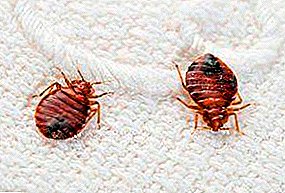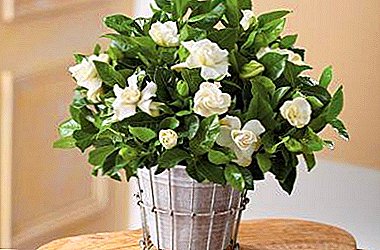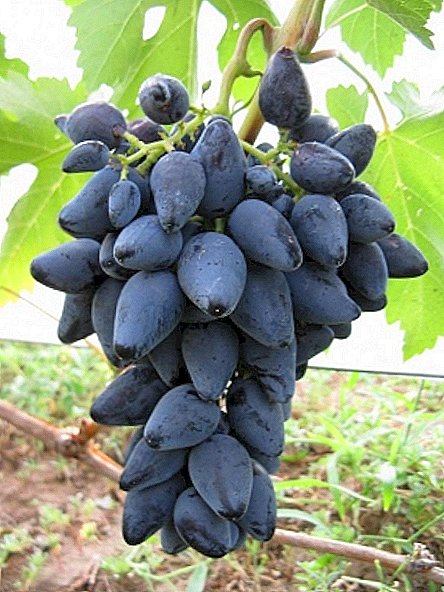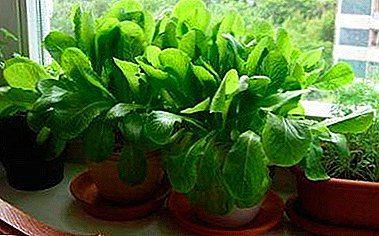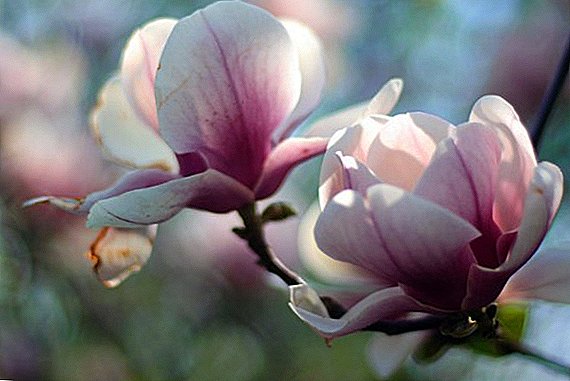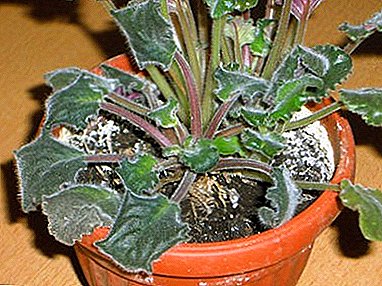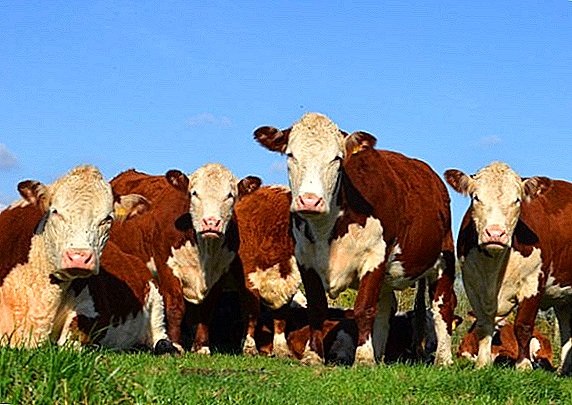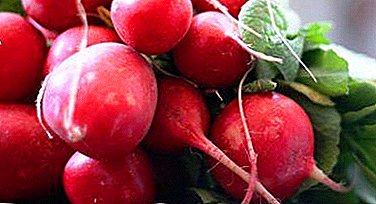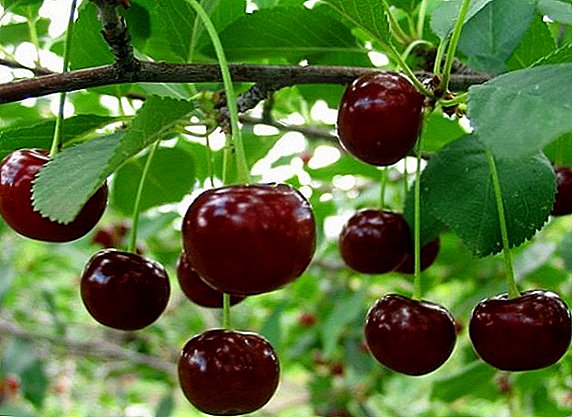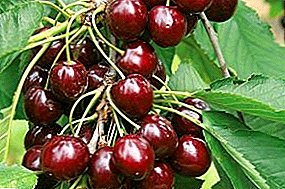 Cherry is probably one of the most popular berries in our gardens. It is unpretentious, very tasty and suitable for preparing a wide variety of dishes - both dessert and savory, for example, sauces for meat, which is possible due to the sour taste inherent in this fruit. It is because of him that many prefer to use not fresh cherries, but in the form of desserts. But this problem is solved by hybrid varieties obtained by crossing cherries and sweet cherries. One of the most popular hybrids is "Meeting" cherry.
Cherry is probably one of the most popular berries in our gardens. It is unpretentious, very tasty and suitable for preparing a wide variety of dishes - both dessert and savory, for example, sauces for meat, which is possible due to the sour taste inherent in this fruit. It is because of him that many prefer to use not fresh cherries, but in the form of desserts. But this problem is solved by hybrid varieties obtained by crossing cherries and sweet cherries. One of the most popular hybrids is "Meeting" cherry.
Inference history
The authors of the variety are Nikolay and Valentina Turovtsev, employees of the Melitopol Institute of Irrigated Gardening them. MF Sidorenko. The hybrid was obtained in 1966 by crossing the "Lyubskaya" cherry and the "Kievskaya-19" cherry and cherry hybrid.

In 1995, this medium late variety of universal purpose, zoned in the steppe zone, was entered into the State Register of Plant Varieties of Ukraine, its identification number is 82074001.
Tree description
Cherry "Encounter" refers to the bushy cherries, it is of short stature, which makes it possible to attribute the hybrid to natural dwarfs: rarely does a tree grow above two meters. To the crown, it has a spherical, rather dense branch, its components, drooping.
You will be interested to learn about the agricultural technology of cultivation of such varieties of cherries as "Turgenevka", "Vladimirskaya", "generous", "Zhukovsky", "Shpanka", "Ural Ruby", "Mayak", "Kharitonovskaya"
The root system is a collection of both vertical and horizontal roots. Vertical tend to the depth and can reach two meters in length, while horizontal ones, departing at a small 10-40 cm depth from the root collar, expand, giving annually abundant basal growth. The area of distribution of horizontal roots is one and a half times larger than the crown projection.
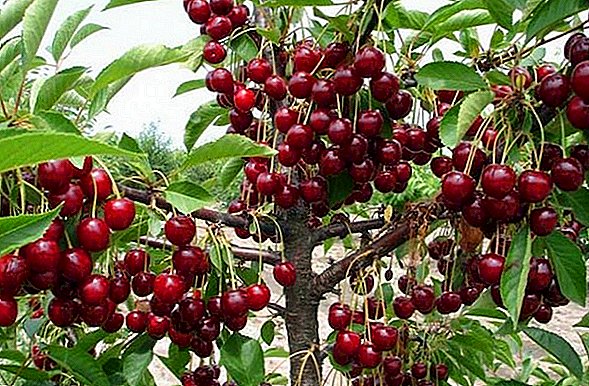
The leaves are rich green enough large, they have an oval shape and a dentate edge.
The flowers are collected in small umbellate inflorescences, which, depending on the growing climate can be both white and pinkish.
Important! To buy seedlings for your garden, preferably in proven places with a good reputation, for example, in nurseries. This will protect you from unpleasant surprises such as a transfer. Pay attention to the roots: they must be well developed, powerful. The bark should be uncracked, and the leaves look healthy. Leaves should not be too much, it means that the seedling was dug out too early.
Fruit Description
Cherry fruit size "Encounter" large, the average weight of a berry is 9-10 g; individual berries reach 15 g of weight. In general, they are approximately equal in size. The shape of the cherry is a somewhat flattened ball. Stone with such outstanding sizes of berries is average, it is easy to separate it from the tender pulp that melts in the mouth. The thin glossy peel painted in dark red color, nevertheless rather dense. It is quite easily separated from the pulp.

Characteristics of a variety
The dessert taste of this cherry, which contains a large amount of various sugars, is assessed by tasters as high as possible - 5 points, which allows the “Meeting” to compete with such premium varieties as “Chocolate Girl” and “Miracle”.
Read the basic rules of planting cherries and how to do it correctly in the fall
Disease and pest resistance
Trees offer decent resistance to dangerous common garden diseases - coccomycosis and moniliosis, which damage the health of the entire garden and spoil the crop.

Winter hardiness and drought resistance
One of the distinguishing features of this hybrid is its increased resistance to harsh winter conditions. The tree is able to carry up to 25 degrees of frost without damage to itself. With the same success cherry "Meeting" is experiencing a rather long drought.
Did you know? It is believed that Europe is obliged to sweet varieties of Persia cherry, and sour - Asia Minor.
Pollinators, unwanted and desirable neighbors
This variety is considered partially self-fertile, although in some sources it is called completely self-barren. In any case, the Meeting Cherry needs the presence of third-party pollinators:
- "Lubskaya";
- "Samsonovki";
- "Minors";
- "Visible".


The ideal neighbors will be grapes and cherries.
We can not allow the neighbors of the "Meeting" were:
- apricot;
- pear;
- plum;
- peach;
- black currant;
- Walnut.

Terms of ripening
The tree blooms, depending on the climate of the growing place in mid-April or in early May, the fruits ripen closer to the end of June, in the twenties.
Did you know? It is difficult to say exactly when cherries were grown and cultivated here, but it is known for certain that in the 12th century it was already practiced under Yuri Dolgoruky. Most likely, the Slavic tribes were familiar with this tree much earlier. On the pages of the well-known "Domostroi", dated XYI century, it is strongly recommended to breed cherries.
Fruiting and Yield
The tree enters a fruiting period three to four years after planting, forming fruits on the bouquet branches and the growths of one year old. A single adult tree can, with proper care, produce 20 kg of fruits, in some cases it is possible to harvest 25-28 kg from one plant.

Transportability
Cherries are well stored and carry long-term transportation, even over long distances, which makes the variety suitable for commercial cultivation.
Purpose
Cherries can be consumed fresh used in cooking, making winter preparations, freezing, drying - the variety is universal.
To please yourself and loved ones with useful and tasty drugs, it is useful to know how to freeze, dry, preserve cherries, prepare cherry leaves.
Growing conditions
For any cherry, and "Meeting" is no exception, the preferred soil:
- neutral;
- light sandy loam;
- loam.



Important! If the soil in your area is acidic, it should be limed, before planting a tree in it, and it is better to do this in the fall, if you are going to plant seedlings in the spring.
Planted a tree in areas protected from sharp drafts and water stagnation. It is desirable that the plant received enough sunlight, although from its lack of it does not particularly suffer, because he feels good and in shaded areas.
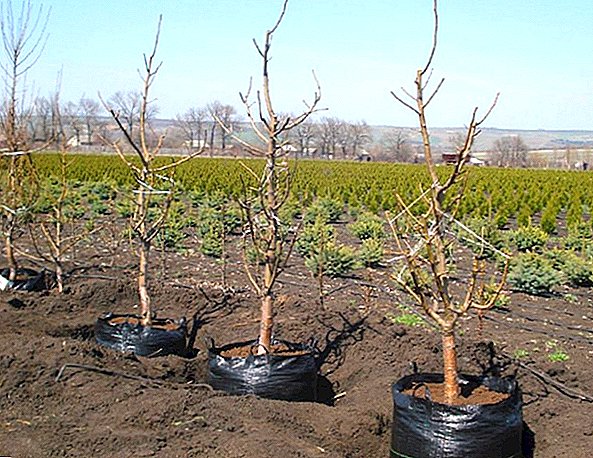
It makes no sense to plant cherry "Meeting" in heavy clay or too acidic soil, as well as on the ground nearby groundwater.
Landing rules
The optimum time for planting depends on the growing climate: if the region is southern, then it is better to plant the cherry in autumn, in the northern, planting will be more appropriate in the spring, after the snow melts and the soil dries out.
Learn the importance of soil acidity for plants, how to determine the acidity of the soil at the site, how to deoxidize the soil, as well as how to improve soil fertility.
Experienced gardeners advise planting cherry trees in mid-spring, starting from April 15, then they take root better.
If you are not sure what the soil is, you can do a simple test to find out. To do this, prepare the infusion by brewing 4 sheets of black currant with a glass of boiling water and cooling it to room temperature. In the infusion should put a clump of earth, taken at a depth of 30-40 centimeters. The color of the resulting solution can be judged on the type of soil:

- bright red - strongly acidic;
- pink - sour;
- blue - alkaline;
- green - neutral.
A gardener who intends to plant several seedlings should maintain the distance between the holes. not less than 3-4 meters, because, despite the short stature and even dwarfism, the “Encounter” has a luxurious spreading crown, and the root system grows one and a half times wider than its projection. Otherwise, the trees will take away from each other resource and will not grow well. The rule of 3-4 meters indent should be observed in relation to other, especially higher trees, as well as farm buildings.
Important! Fertilizing the soil taken out of the hole can be mineral, rather than nitrogenous fertilizers, which can cause great harm to the tender roots of the young tree.
The well itself must be at least half a meter wide and deep.
Just before the landing, the hole is supplied with a peg-support, to which a young sapling is tied. Optimally, to plant the plant was not older than two years, more adults have very few chances to take root.

Putting a nutritious earthen mixture around the peg-support, the roots of the seedling, which should be strong and have a healthy appearance, gently straighten it. When planting, the peg should be on the south side, while the trunk is from the north. The root neck can not be buried, it must be either flush with the ground, or even 3 cm to rise.
Carefully fill the ground with fertilizer in the hole and tamping it down, you should build an earthen roller at a distance of 30-40 cm from the trunk. This is to prevent water from escaping from the well.
After the end of the ground work, the tree is tied to a support, watered with 20 liters of water and mulch the tree trunk. For mulch you can use:

- grass;
- humus;
- peat;
- straw;
- sawdust and so on.
Important! 6-8 hours before planting, the roots should be placed in water so that they somewhat compensate for the lost moisture. If for soaking to use the solution "Kornevina", you protect the cherry from fungal damage, and also provide it with a better survival rate.
After planting in the coming days, the young tree should be watered hard, while avoiding stagnant water and decay of the roots.
Seasonal care features
Like any garden tree, cherry "Meeting" needs care, which, however, is no different from the usual care of cherry trees.
Watering
In general, cherries are actively watered three times a season:
- when young shoots grow;
- when the tree blooms;
- when the fruits ripen.

At a time, at least three buckets of water are brought under each tree.
If the spring is too cold and rainy, you must additionally attract pollinating insects. To do this, dissolve 100 g of honey in a bucket of water and spray the trees with the resulting liquid.
Did you know? It is good for people with sleep disorders to eat 1-2 handfuls of cherries before going to bed. The natural melatonin contained in it - the sleep hormone - will help you sleep better and have a better rest.
Top dressing
A three year old plant already needs to start fertilizing. Before the buds bloom, each square of the trunk circle should be fed for the first time in a season a mixture of:
- 20 g of ammonium nitrate;
- 10 g of double superphosphate;
- 5 g of potassium salt.



The second time the cherry is "poured" with the mixture:
- wood ash - 1 liter per bucket of water;
- potassium sulphate solution - 2 tbsp. spoons and urea - 1 tbsp. spoon made in the same amount of water.



After the tree sheds leaves, it needs to be backed up with one or two humus buckets before a long rest period.
Important! In addition to the annual top-dressing at the right time, the cherry needs every 3-4 years normalization of the soil acidity. For this, the soil should be lime. This event will additionally help the roots to assimilate food much better, in addition, lime is required on the tree in order to form bones.
Soil care
During the season it is advisable to loosen the trunk circle twice or three times. and before winter, dig it up deeply so as not to damage the root system.

While the sapling is still young and spends the main forces on engraftment, “freeloaders” appear here - weeds, which should be regularly removed. Rid the gardener from this need can mulching.
Preventive treatment
Despite the resistance of this variety to all kinds of diseases, one should not neglect preventive measures:
- spring whitewash with special preparations;
- spraying at the beginning of the growing season with a fungicide, copper sulphate or bordeaux;
- treatment with a fungicide after shedding the petals and re-spraying after 10 days;
- release of soil from fallen foliage and carrion;
- Lubrication of deep wounds with the help of wounds in order to prevent infection.
It is better to alternate fungicidal means in order to avoid the resistance of possible pathogens, the benefit of which modern industry offers in many. 
If, contrary to preventive measures or due to neglect of them, you saw signs of disease on your cherry, treat the plant with appropriate special means - insecticides or fungicides.
Important! From coccomycosis - an unpleasant fungal disease cherry "Meeting" will help the stock cherry.
Pruning and removal of basal shoots
It is necessary to thin out the crown, because this variety is characterized by rapid growth of shoots. It is better to do this in spring, when fragments that have not yet survived the winter are clearly visible. It is also necessary to get rid of weak and excessively thickening branches.

It is equally important to regularly remove basal shoots that deplete the plant and take a certain part of the nutrients from it.
Learn how to properly prune cherry in spring
Preparing for the winter
In regions where winters are not too harsh, the Meeting Cherry does not need special autumn events, in addition to the standard procedure of whitewashing and carrying out water-charging irrigation (10 buckets of water), if the summer was very dry. After a normal or rainy summer, there is no need for this procedure.

In regions with cold winters and bitter frosts, you should additionally make autumn sanitary pruning, carry out a circular bending of the branches, mulch the tree trunk and cover it with snow, you can mix it with sawdust.
Did you know? Although the average age of a cherry is relatively small, there are long-livers among them. These include 13-meter English cherry, which is more than 150 years old.
Cherry "Meeting", acquiring outstanding qualities, has not lost, however, the ability to resist diseases, frost, drought and other troubles trees. Because of this, this variety is so valued by both amateur gardeners and specialists.
Reviews from the Internet:



